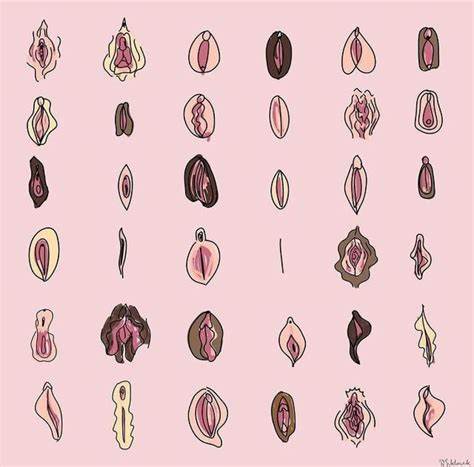
Vagina Shapes and Sizes: Diversity and Acceptance
This article aims to demystify the natural differences in the shapes and sizes of vaginas, to reassure those who may feel self-conscious, and to explain why these variations have no direct link to their sex life or their daily well-being.
One Single Organ - Infinite Diversity
Yet, the media and pornography often present a standardized view of what a vagina "should" look like.
In reality, there is no universal standard for shape, size, or appearance.
Vulvas, which include the labia, clitoris, and vaginal opening, vary widely from woman to woman, influenced by factors like genetics, age, hormones, and even body habits.
Common Variations of the Vulva
-
Vaginal lips
-
Inner labia (labia minora) : Some women have small, inconspicuous inner labia, while others have labia that protrude beyond the outer labia.
Both are perfectly normal.
-
Outer lips (labia majora) : They can be fleshy, flat, symmetrical or asymmetrical.
These characteristics do not determine the health or normality of a vulva.
-
Inner labia (labia minora) : Some women have small, inconspicuous inner labia, while others have labia that protrude beyond the outer labia.
-
The clitoris
- The size and sensitivity of the clitoris also varies. Some are more visible than others, with a hood that may be more or less developed.
It has no impact on pleasure or the ability to experience orgasms.
- The size and sensitivity of the clitoris also varies. Some are more visible than others, with a hood that may be more or less developed.
-
The vaginal opening
- Some women have a wider or narrower opening, but this difference is usually imperceptible to the naked eye.
The vagina itself is an extremely elastic organ, designed to adapt to various situations (such as sexual intercourse or childbirth).
- Some women have a wider or narrower opening, but this difference is usually imperceptible to the naked eye.
Factors Influencing Appearance
For example, lips may darken or become longer with age, which is a natural process.
Reassuring Complexed Women: Everything is Normal!
Here are some truths to ease those concerns.
1. There is no such thing as a “perfect vagina”
Anatomical variations are normal and should never be seen as defects.
What really matters is maintaining good personal hygiene and general health.
2. Differences have no impact on sexuality
Sexual pleasure has much more to do with emotional connection, communication, and stimulation of erogenous zones (like the clitoris) than with physical characteristics.
Additionally, the vagina is designed to be incredibly adaptable.
A woman with a narrow or wide vaginal opening can have an equally fulfilling sex life.
3. Men don't notice these details as much as you might think.
In reality, the vast majority of partners focus more on the experience and emotions of the moment than on the appearance of this area.
4. Cosmetic surgery is not necessary
Although this is a personal choice, it is crucial to remember that these procedures are not medically necessary unless there is severe physical discomfort.
Accepting your body as it is remains the healthiest and most rewarding path.
Differences and Impact on Daily Life
However, here are some situations where these variations can play a role.
Physical Comfort
In these cases, simple solutions such as suitable clothing or lubricants can help.
Intimate Hygiene
Using plain water or mild, unscented products is enough to keep the area clean.
Avoid douching, which can disrupt the natural balance of vaginal flora.
Pregnancy and Childbirth
It is important to know that the vagina has a natural ability to stretch and largely return to its original shape after childbirth.
Kegel exercises can help strengthen your pelvic floor muscles for greater comfort and tone.
Tips for Celebrating and Loving Your Body
-
Avoid comparisons
Don't compare your body to what you see in the media.
The images are often modified and do not reflect reality. -
Get informed
Learn about your anatomy by reading educational books or talking to a healthcare professional.
Knowledge can dispel fears and misunderstandings. -
Talk about it
If you are concerned about any aspect of your anatomy, do not hesitate to discuss it with a doctor or therapist.
It can help you better understand your emotions and overcome your complexes. -
Practice self-compassion
Remember that your body is a powerful tool that allows you to live, love, and enjoy life.
Practice gratitude towards your body by taking care of it and recognizing its qualities. -
Explore your sexuality
Learn what feels good to you by exploring your body.
Being more aware of your desires and sensations can boost your confidence and improve your sexual experiences.
Conclusion: The Beauty of Diversity
Your vagina, no matter what shape or size, is a precious part of your body.
There is no "standard" or "ideal model", but simply a wide range of natural variations, all beautiful in their own way.
Accepting and celebrating your uniqueness is taking a step towards a more fulfilling life, free from external judgments.
Be proud of your body, and remember that you are unique – and that is a strength!




